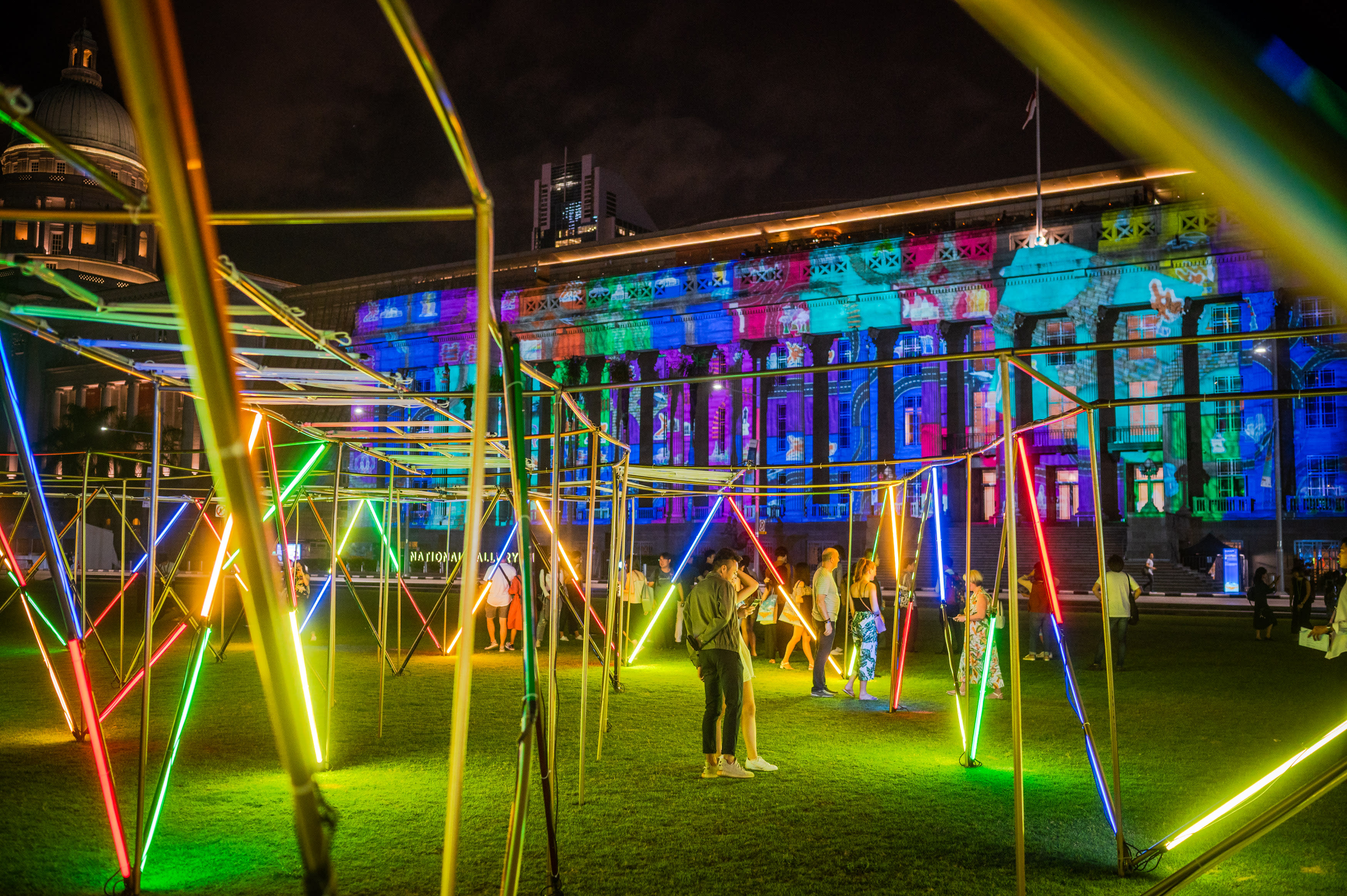Welcome Urban nomads. In today’s post, I will be talking about light pollution in Singapore and its effects on humans and the flora and fauna, which will be covered in 2 post. Singapore Is a small city state which relies heavily on the tourism sector, which is vital to Singapore’s economy. In order to achieve this status, Singapore employs a lot of artificial light to illuminate and create sights and spectacles that continue to draw international attention, putting Singapore in the lime light.

Light pollution in Clarke Quay
These can be observed in only the light shows displayed at MBS, but also a look at Clarke Quay, where are a bombardment of lights of different colors to illuminate these tourist attractions.
Furthermore, the iconic skyline of Singapore takes pride on the backdrop of the artificial lighting, providing tourist a nice backdrop of Singapore’s financial district.

Marina Bay Sands Light Show as attractions for tourist provide ample light pollution in the area
A look at the night sky across Singapore and you will notice that there isn’t a lot of stars. This arises as light pollution generated from artificial lights from modern city like Singapore have invaded into the dark night. In fact, a 2016 study done by the Light Pollution Science and Technology Institute puts Singapore as the most polluted nation in the world, with some of the biggest sources of light pollution being tourism related sectors like Changi Airport and Marina Bay financial district. In a city that never sleeps, which draws tourist over to Singapore to experience firsthand, inevitably resulted in light pollution being a key issue that needs to be address in Singapore

Light pollution emitting from attractions like these installations at Light to Night Festival in Singapore.
In this post, I will be covering the negative issues of light pollution for the local populous in Singapore.
Impact on Humans
Light has the ability to manipulate and influence the circadian rhythms of humans. But before I explore into more details on its impact on humans…
What Are Circadian Rhythms?
Have you ever wondered why at certain periods of the day we feel energetic and sleepy as night fall approaches everyday. This is by no means coincidence. The fact we feel this way is due to the Circadian rhythm (Falchi et al., 2011). It is a 24 hour internal clock that helps facilitate our drowsiness and alertness subconsciously and is often done at regular time intervals (Falchi et al., 2011).

The circadian rhythm in Humans
When it is dark outside, our eyes relay signals to the suprachiasmatic nucleus (SCN) in the hypothalamus, prompting us that it is time for bed. In response, the pineal gland in the brain then releases melatonin, which does not only allow for deep sleep, but has also a lot of various health benefits (Falchi et al., 2011). These benefits can include antioxidant properties which can not only strength our immune system, but also reduces our cholesterol levels. As such, due to the prolong exposure of artificial lights at night, this can create disruption in our circadian rhythms , thereby leading to a suppression of the production of melatonin (Gaston et al ., 2012).
How much light is considered too much?
According to research, they illustrate how circadian rhythms can cause disruption when light is as low as around 180 lux. The light sources form tourist sites, workplaces, skylines and hotels are more than enough to change our biological clock and circadian rhythms!

Consequences of altered rhythm
In experimental studies which are done on rodents, repeated exposure to dim light (50 to 300 lux) at night create irritability, anxiety, and also suggest that there is a higher propensity to obesity, and poorer memory abilities (Gaston et al ., 2012).
Likewise, correlational studies done on humans have also found that long-term exposure to light at night can cause sleep disturbances and increases our chances to cardiovascular disorders, cancer and depression.
Stay tuned for the next post to discover on its impacts on the local flora and fauna!
Video on Light Pollution In Singapore
References
- Gaston, K. J., Davies, T. W., Bennie, J., & Hopkins, J. (2012). Reducing the ecological consequences of night-time light pollution: Options and developments. The Journal of Applied Ecology, 49(6), 1256-1266.
- Falchi, F., Cinzano, P., Elvidge, C. D., Keith, D. M., & Haim, A. (2011). Limiting the impact of light pollution on human health, environment and stellar visibility. Journal of Environmental Management, 92(10), 2714-2722. doi:10.1016/j.jenvman.2011.06.

